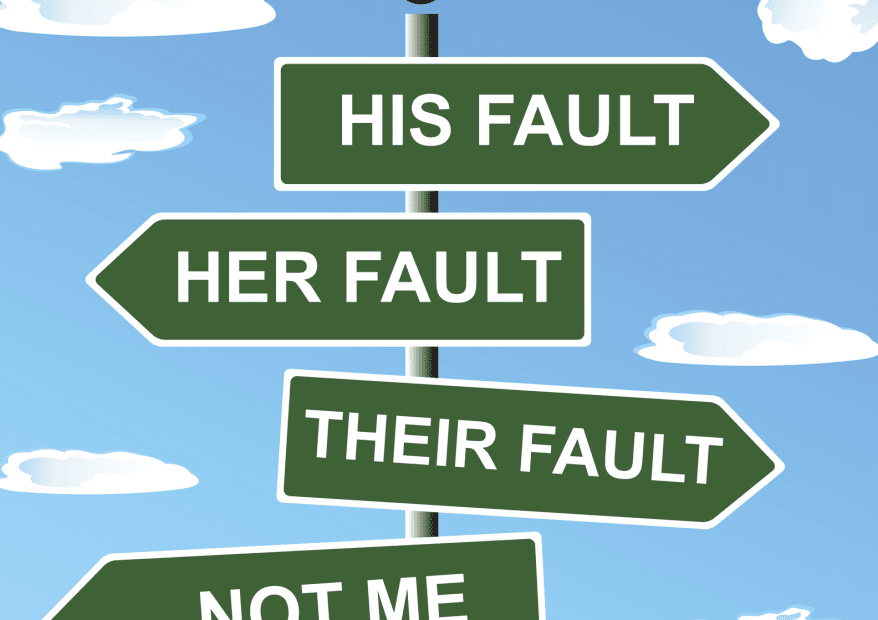A blame culture will arise when employees, management or the company pass responsibility on to others for mistakes or lack of accountability for their actions. Due to the nature of the work, a blame culture may be particularly prevalent within the Health and Safety Department.
It’s easy to get into the habit of blaming others for mistakes, or others feeling that it is appropriate to blame you.
A blame culture within a company is disastrous though. It breaks down the companies culture and structure. Sets employees and departments against each other and removes trust in both the company and each other.
In terms of health and safety, a blame culture is particularly catastrophic. It creates a negative safety culture, fosters an unsafe psychological environment, and allows the real roots of causes to incidents remain undetected. Allowing accidents and harm to employees to happen. This in turn leads to a myriad of economic penalties to the company, outlined below.
A blame culture is unfortunately endemic in the health and safety profession. Due to the often physical obviousness, or documented process of any issue. Mistakes and errors cannot be swept under the carpet as readily as they can in other departments and so the finger pointing begins.
How as HSE professionals, can we do our part to work towards creating a no blame culture ? Both for ourselves and our Safety Department ? The wider company and employees whom we are seeking to protect ? What is the solution here ?
In the workplace, change starts at the top. You cannot effectively ask employees to take accountability and responsibility if you do not do so yourself. When an employee is blamed by their Manager, they are more likely to blame someone below them. As the Health and Safety Manager the problem is not yours to shoulder alone.
How Do I Know if my Company has a Blame Culture ?
Obviously much of a blame culture is indicated by perception and/or the behaviour of employees. If you are looking for tangible proof, pertinent to health and safety, perhaps review the below indicators:
- A high sickness and absenteeism rate
- High staff turnover
- Lack of compliance with relevant health and safety laws
- Lack of management commitment to safety, e.g. saying one thing and doing another
- A weak health and safety management structure
- Lack of safety training programmes
- Health and safety receiving lower priority than other business units
- Lack of resources given to health and safety
- Lack of worker participation and consultation in health and safety
- Blame is assigned to particular employees, rather than processes
- Safety changes are applied reactively, not proactively
How Can I Start to Work to Create a Company No Blame Culture ?
- Define the “Why” as much as the “What.” – Explain why this change is important to the company. But also to you and each individual employee. Explain how you personally are going to take ownership, being as specific as possible with your actions
- Follow-up to ensure accountability – Follow up and make check-ins on how people are doing in the new No Blame and No Excuses culture. Don’t let it go and be consistent
- Look at Yourself – Start with self-awareness. Are you blaming and making excuses? If so, how will you stop yourself? How will you empower and engage while being the model for change ?
Spread this Throughout the Company
- Switch the mindset to “We’re all learning,”- Share your mistakes. Use them as teaching moments, not shaming moments. If you are an HSE Manager, discuss your own mistakes with your HSE Officers and the lessons learned. Create a psychological safe space that will encourage others to follow
- Conduct regular lessons learned debriefs – At the end of a project with your team to understand what went wrong and how you will use that information to move forward with a stronger strategy. Teach others to approach problems from a place of kindness and compassion
- Focus on what you can change – You can’t change other people. Consider a system’s approach to problems — defining the problem taking into consideration the whole, not in parts. Ask “Where did the process break down?” The solutions to your companys problems are more likely to be found by examining what’s wrong with systems than by examining employees
- Ask yourself the question “How may I have contributed to this problem? – Asking this question will give you ideas around how to prevent the problem from reoccurring, and how to discuss it in a way that promotes trust as opposed to fear or contempt
Working to eliminate blame will improve employees’ morale and improve health and safety throughout the company. Help make your company a place where compassion, trust and therefore people can thrive (and survive !) by putting these strategies into practice.
If you are looking for an HSE Consultant in the UAE, Corporate OHS is a Health and Safety Consultancy whose HSE Consultants offer expert resources and superior performance to give you greater results.
We specialize in creating workable, user friendly solutions aligned to your business activities, operations and budget.
Our range of health and safety consultancy services includes;
- Long term or project based HSE outsourcing
- Flexible monthly support retainers giving access to HSE services without the burden of a permanent cost
- Risk assessments
- Hazard identification and control measure implementation
- Gap Analysis and safety audits
- HSE legal compliance reviews and assistance
- HSE management system development, implementation and improvement including locally compliant systems such as Abu Dhabi OSHAD, Sharjah OSHJ and/or accredited systems such as ISO 45001, ISO 14001, ISO 9001 and ISO 50001
- Accident investigations
- Business continuity and crisis management
To find out more about our services, please visit our website www.corporateohs.com send an email to enquiries@corporateohs.com or call Caroline Savage on 052 566 0949

